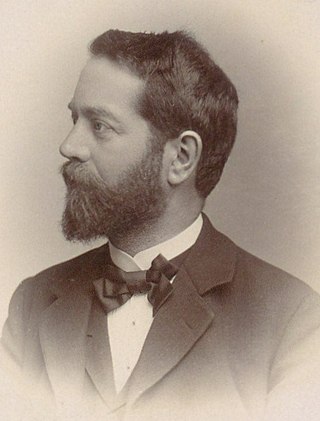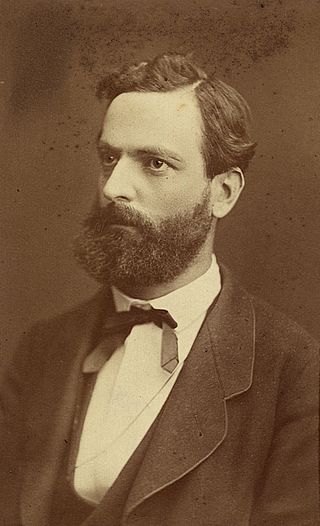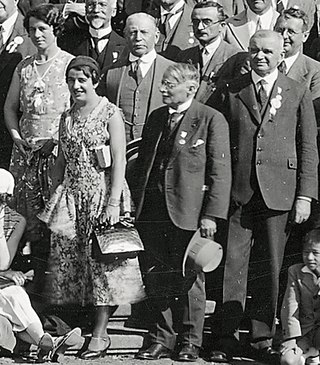
Otto Forster (born 8 July 1937 in Munich) is a German mathematician.

Otto Forster (born 8 July 1937 in Munich) is a German mathematician.
Forster received his Diplom in 1960 from Ludwig Maximilian University of Munich. There he received in 1961 his doctorate. His thesis Banachalgebren stetiger Funktionen auf kompakten Räumen (Banach algebras of continuous functions on compact spaces) was supervised by Karl Stein. In 1965 Forster also completed his habilitation in Munich. After spending the academic year 1966–1967 at the Institute for Advanced Study [1] and the academic year 1967–1968 as a substitute professor at the University of Göttingen, he became a full professor at the University of Regensburg in 1968. In 1968–1969 he was a visiting professor at the University of Geneva. In 1975 he moved to the University of Münster. Since 1982 he has been a professor at the Mathematical Institute of the Ludwig Maximilian University of Munich. Even after his retirement in summer 2005, he still regularly offers lectures for advanced students.
In 1970 he was an invited speaker with talk Topologische Methoden in der Theorie Steinscher Räume (Topological methods in the theory of Stein spaces) at the International Congress of Mathematicians in Nice. [2] In 1984 he became a member of the Bavarian Academy of Sciences and Humanities.
Forster's research deals mainly with complex analysis, but also with questions of algebraic geometry, analytic number theory, and algorithmic number theory. His program ARIBAS, an interpreter with a Pascal-like syntax, offers powerful arbitrary-precision arithmetic and various library functions based on such computational arithmetic. ARIBAS, available under the GNU General Public License, also serves as the basis for the algorithms discussed in Forster's book Algorithmische Zahlentheorie (Algorithmic number theory). [3] He wrote two appendices for the 2nd edition of Dale Husemöller's book Elliptic Curves. [4]
He discovered the Forster–Swan theorem.

Felix Christian Klein was a German mathematician and mathematics educator, known for his work in group theory, complex analysis, non-Euclidean geometry, and the associations between geometry and group theory. His 1872 Erlangen program classified geometries by their basic symmetry groups and was an influential synthesis of much of the mathematics of the time.
The Riemann–Roch theorem is an important theorem in mathematics, specifically in complex analysis and algebraic geometry, for the computation of the dimension of the space of meromorphic functions with prescribed zeros and allowed poles. It relates the complex analysis of a connected compact Riemann surface with the surface's purely topological genus g, in a way that can be carried over into purely algebraic settings.
In mathematics, the uniformization theorem states that every simply connected Riemann surface is conformally equivalent to one of three Riemann surfaces: the open unit disk, the complex plane, or the Riemann sphere. The theorem is a generalization of the Riemann mapping theorem from simply connected open subsets of the plane to arbitrary simply connected Riemann surfaces.
The theory of functions of several complex variables is the branch of mathematics dealing with functions defined on the complex coordinate space, that is, n-tuples of complex numbers. The name of the field dealing with the properties of these functions is called several complex variables, which the Mathematics Subject Classification has as a top-level heading.

Helmut Hasse was a German mathematician working in algebraic number theory, known for fundamental contributions to class field theory, the application of p-adic numbers to local class field theory and diophantine geometry, and to local zeta functions.
In algebraic geometry, a semistable abelian variety is an abelian variety defined over a global or local field, which is characterized by how it reduces at the primes of the field.
In mathematics, in the theory of several complex variables and complex manifolds, a Stein manifold is a complex submanifold of the vector space of n complex dimensions. They were introduced by and named after Karl Stein. A Stein space is similar to a Stein manifold but is allowed to have singularities. Stein spaces are the analogues of affine varieties or affine schemes in algebraic geometry.
Hasse's theorem on elliptic curves, also referred to as the Hasse bound, provides an estimate of the number of points on an elliptic curve over a finite field, bounding the value both above and below.
In arithmetic geometry, the Weil–Châtelet group or WC-group of an algebraic group such as an abelian variety A defined over a field K is the abelian group of principal homogeneous spaces for A, defined over K. John Tate named it for François Châtelet who introduced it for elliptic curves, and André Weil, who introduced it for more general groups. It plays a basic role in the arithmetic of abelian varieties, in particular for elliptic curves, because of its connection with infinite descent.

Heinrich Martin Weber was a German mathematician. Weber's main work was in algebra, number theory, and analysis. He is best known for his text Lehrbuch der Algebra published in 1895 and much of it is his original research in algebra and number theory. His work Theorie der algebraischen Functionen einer Veränderlichen established an algebraic foundation for Riemann surfaces, allowing a purely algebraic formulation of the Riemann–Roch theorem. Weber's research papers were numerous, most of them appearing in Crelle's Journal or Mathematische Annalen. He was the editor of Riemann's collected works.
In mathematics, Belyi's theorem on algebraic curves states that any non-singular algebraic curve C, defined by algebraic number coefficients, represents a compact Riemann surface which is a ramified covering of the Riemann sphere, ramified at three points only.

Martin Maximilian Emil Eichler was a German number theorist.

Karl Stein was a German mathematician. He is well known for complex analysis and cryptography. Stein manifolds and Stein factorization are named after him.
In mathematics, real algebraic geometry is the sub-branch of algebraic geometry studying real algebraic sets, i.e. real-number solutions to algebraic equations with real-number coefficients, and mappings between them.
This is a timeline of the theory of abelian varieties in algebraic geometry, including elliptic curves.

Andreas Speiser was a Swiss mathematician and philosopher of science.

Karl Rudolf Fueter was a Swiss mathematician, known for his work on number theory.

Klaus Hulek is a German mathematician, known for his work in algebraic geometry and in particular, his work on moduli spaces.

Dale Husemöller is an American mathematician specializing in algebraic topology and homological algebra who is known for his books on fibre bundles, elliptic curves, and, in collaboration with John Milnor, symmetric bilinear forms.
Martin Schottenloher is a German mathematician.
{{cite book}}: CS1 maint: postscript (link)